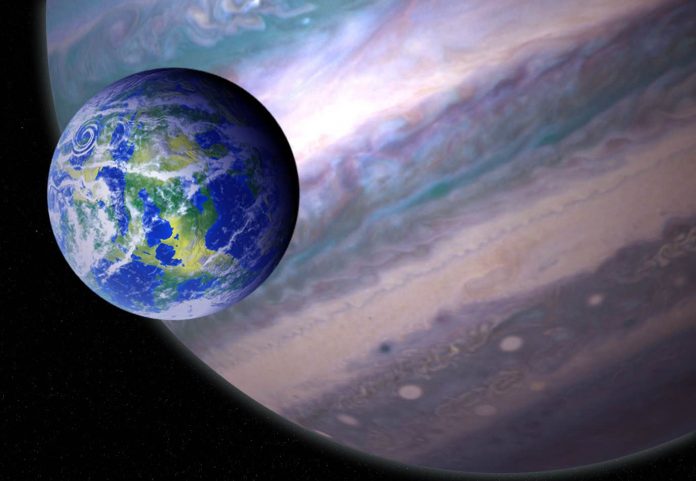Researchers have identified 121 giant planets that potentially host habitable moons. Scientists believe the next generation of telescopes will be able to target alien moons in search of signs of life.
As NASA’s Kepler telescope searched for potentially habitable planets over the years, it also revealed many moons that could host life. Within the Solar System, Jupiter’s moon Europa is the most likely place beyond Earth to have conditions suitable for life. Many other solar system moons like Ceres, Ganymede, Enceladus, Titan, and Dione also possess similar characteristics. Scientists think these moons are good places to look for life because they can harbor oceans beneath their surface and interaction of water with rocks on sea floors could produce chemical reactions that can trigger some kind of life.
In the latest effort, researchers have identified more than 121 giant planets that potentially host moons capable of supporting life. Future telescopes can use this work to characterize the composition of these moons and to detect tell-tale signs of life, called biosignatures, in their atmospheres.
When it comes to the habitability of moons, astronomers always pay close attention to whether or not their respective planets orbit within their star’s habitable zone. Planets that orbit close to their star are more likely to maintain water in the form of vapor, while those farther away may have water frozen on their surfaces as ice. The existence of liquid water on their surface is also a key factor because it is an essential ingredient for life.
The newly identified 121 giant planets orbit within the habitable zones of their stars. These planets are more than three times the radii of the Earth and each is expected to have several large rocky moons called exomoons.
“There are currently 175 known moons orbiting the eight planets in our solar system. While most of these moons orbit Saturn and Jupiter, which are outside the Sun’s habitable zone, that may not be the case in other solar systems,” said Stephen Kane from the University of California, Riverside. “Including rocky exomoons in our search for life in space will greatly expand the places we can look.”
Although these planets in the habitable zone may harbor rocky moons with the capability of sustaining life, there is no exomoon confirmed so far. The latest study could boost chances of finding one.
“Now that we have created a database of the known giant planets in the habitable zone of their star, observations of the best candidates for hosting potential exomoons will be made to help refine the expected exomoon properties,” said Michelle Hill from the University of Southern Queensland. “Our follow-up studies will help inform future telescope design so that we can detect these moons, study their properties, and look for signs of life.”















